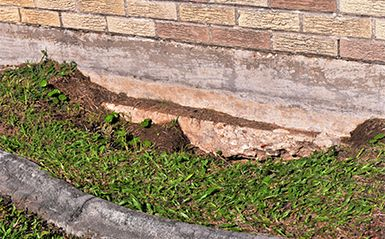When it comes to making foundation repairs beneath the surface of your home, it's natural to wonder about how the repair method you choose impacts the Earth. The different methods used for concrete foundation repair vary in their approach and impact on the environment.
Exploring Different Concrete Foundation Repair Methods
Let's take a closer look at commonly used foundation repair methods and their environmental implications:
Mudjacking: A Traditional Approach
Mudjacking involves pumping a mixture of soil, water, and cement beneath a settled concrete foundation to raise it. While effective in restoring immediate stability, this method may result in soil displacement and potential contamination.
Concrete Pressed Piling: Solidifying Foundation Support
Concrete pressed piling involves driving precast concrete cylinders into the ground to support and stabilize the foundation. It is a reliable method that minimizes soil disturbance and has a relatively low environmental impact.
Steel, Helical, and Concrete Piers: Reinforcing Stability
Using steel, helical, or concrete piers involves driving or drilling supports into the ground to reinforce the foundation. While effective, this method often requires excavation, which can disrupt the surrounding environment.
Polyurethane Foam Injection: Precise and Minimally Disruptive
Polyurethane foam injection, also known as URETEK Deep Injection® (UDI), is an innovative and environmentally friendly approach. URETEK's proprietary 486 Star Polymer is injected into the ground, expanding and solidifying to lift and stabilize the foundation. This method requires no excavation, minimizes soil disturbance, and delivers long-lasting results.
Diving deeper into URETEK’s eco-friendly solution
At URETEK, we are committed to conducting our work with utmost care for the environment. Our Process is minimally invasive and our patented 486® Star Polymer is non-toxic and non-hazardous, ensuring safe interaction with ground and water systems. It’s also non-CFC (chlorofluorocarbon) and non-HFC (hydrofluorocarbon), ensuring it does not contribute to ozone depletion or release harmful substances into the environment. It is also environmentally neutral, meaning it does not contaminate the soil or water.
Conclusion:
When considering foundation repair options, it's essential to choose a method that not only addresses structural concerns but also aligns with your environmental values. Be sure to prioritize methods that leave the smallest overall footprint and provide the longest-lasting results. By selecting URETEK for your foundation repair needs, you can have peace of mind knowing that your home is being restored while minimizing the impact on the Earth.
For more on what makes the URETEK Deep Injection Process different, visit Our Process page.
